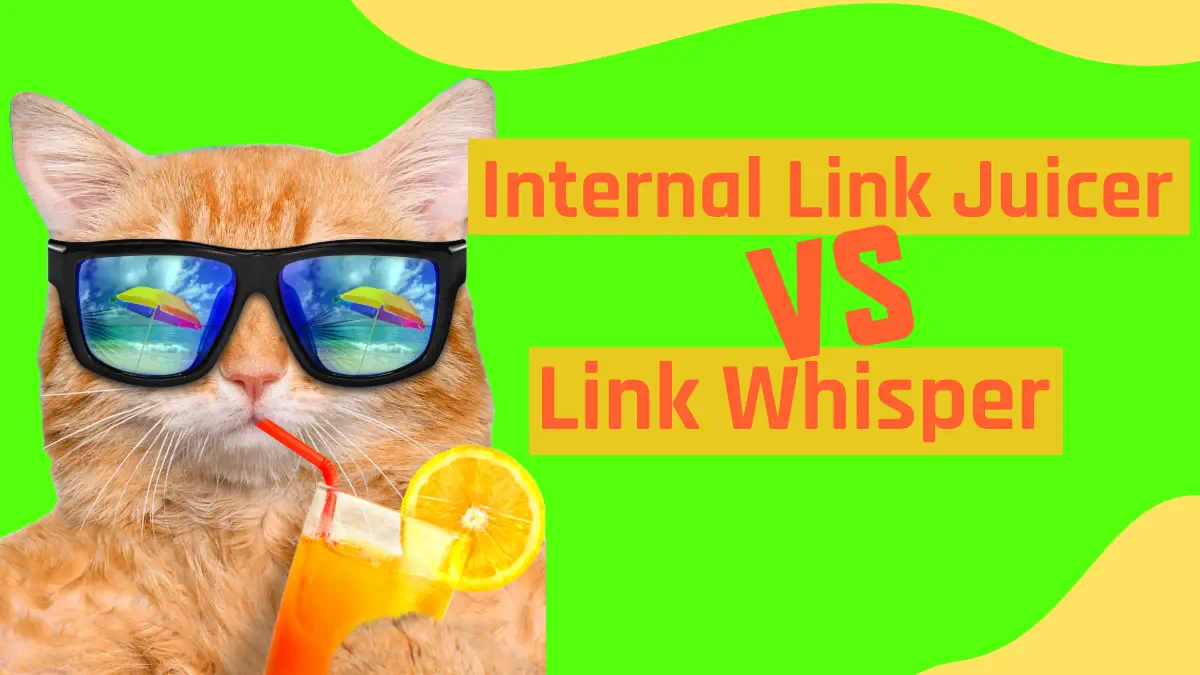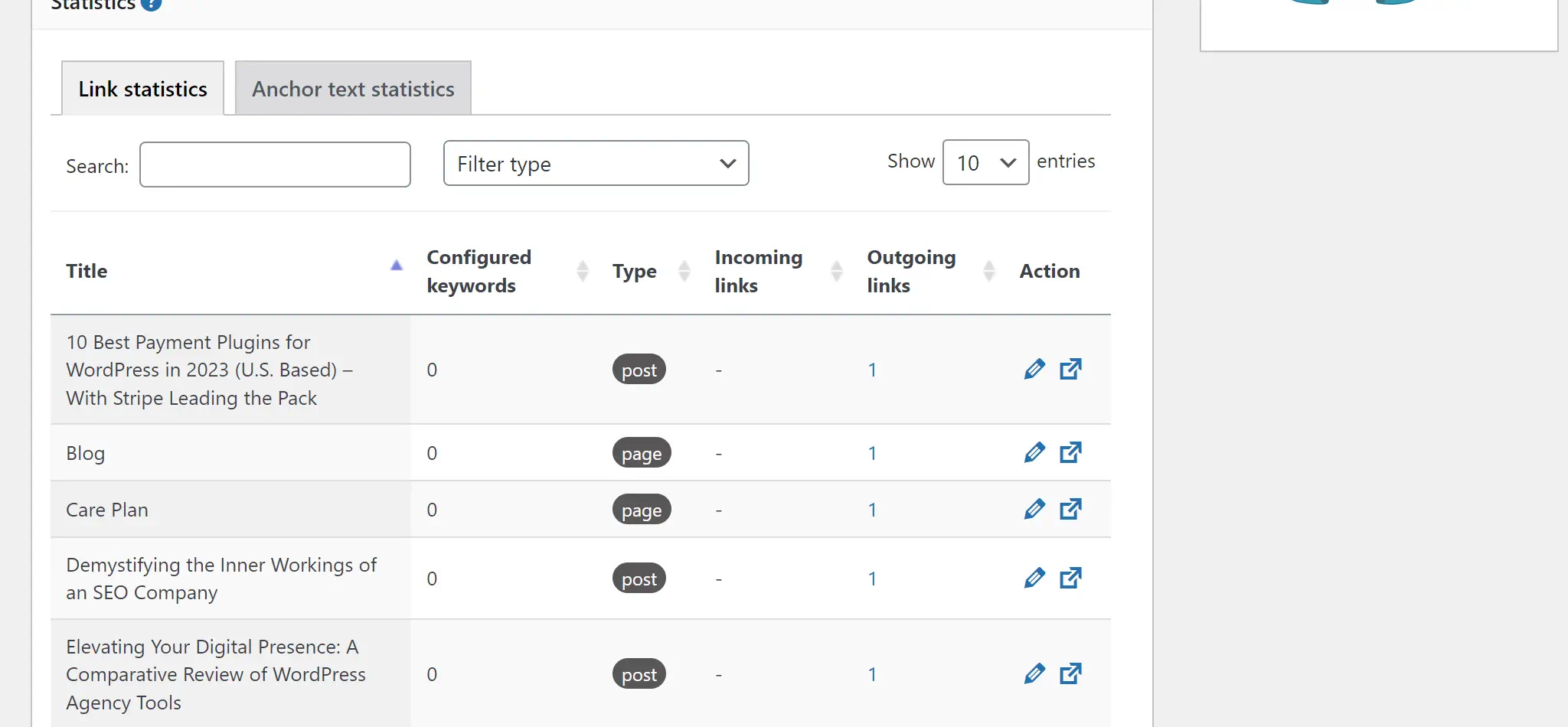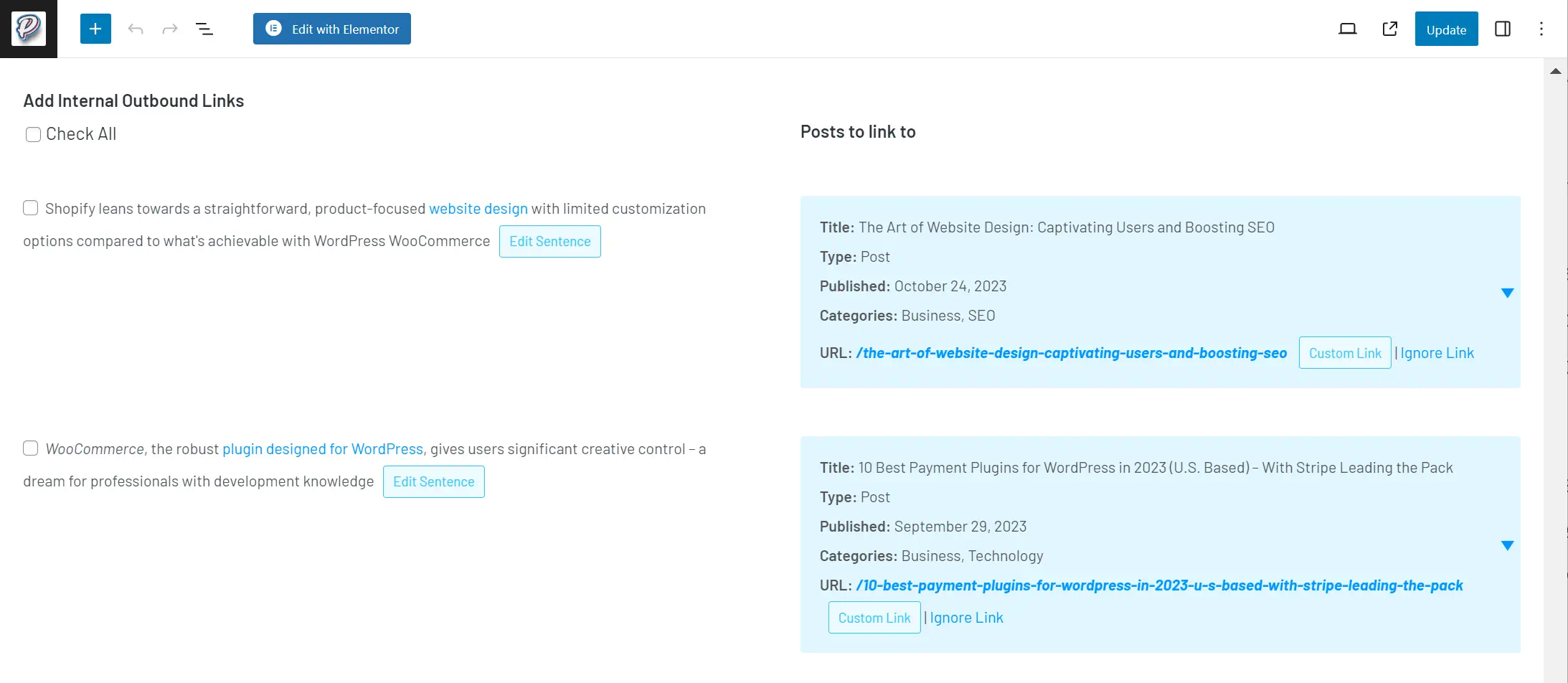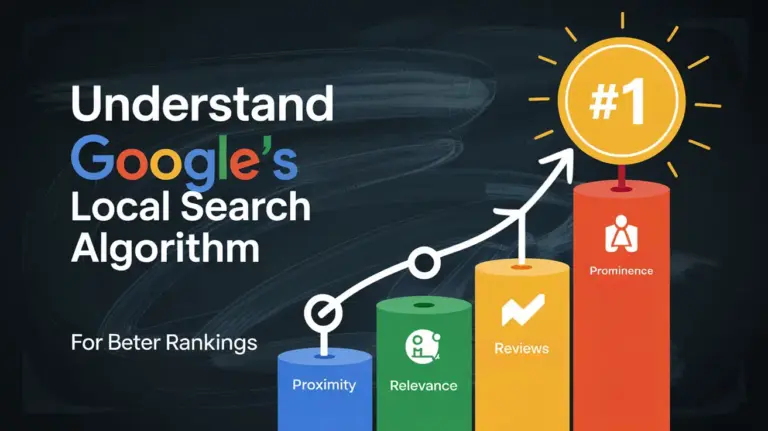
As a professional focused on optimizing WordPress sites, I’m always on the lookout for tools that can improve WordPress SEO performance. Lately, I’ve been particularly interested in two internal linking plugins that stand out for boosting website SEO: Link Whisper and Internal Link Juicer. These plugins are excellent for enhancing and managing internal links, which are crucial for the structure of a site and significantly impact search engine rankings. Each of them brings its own set of unique features to the table, making the process of internal linking more efficient.
Key Takeaways
- Internal Link Whisper and Juicer cater to WordPress SEO needs with divergent strategies.
- Understanding each plugin’s strengths is key to improving website SEO through internal linking.
- Link Whisper uses AI to generate link suggestions, aiming for ease of use.
- Internal Link Juicer relies on keyword associations for tailored internal link creation.
- Choosing the right internal linking plugin depends on one’s SEO goals and website structure.
Understanding the Significance of Internal Linking for SEO
As someone deeply involved in SEO, I understand how crucial website navigation and connectivity are. Internal linking goes beyond merely providing shortcuts for visitors; it forms a strategic framework that plays a key role in how search engines perceive and evaluate your site’s relevance and organization. This approach doesn’t just boost website traffic; it also forms the backbone of your site’s structure, linking your content in a coherent and strategic manner.
Defining Internal Links and Their SEO Impact
Internal links are the navigational threads that bind the pages of your website, creating a coherent map that users and search engines can easily traverse. By connecting these links to your content, search engines can efficiently crawl and index the site, amplifying the relevance and authority of your website. This practice is one of the essential Google SEO best practices.
Automated Internal Linking Advantages
Automatic internal linking plugins are a vital tool for SEO. Picture this: a tool that intelligently identifies linking opportunities within your content, optimizing your website’s SEO as it grows. This automation is a game-changer, liberating you from the manual tedium and endowing you with the precision only algorithms can provide. Whether you’re looking to enhance content discoverability or weave an intricate network of thematic relevance, the benefits of effective internal linking via automation are manifold.
How Internal Linking Tools Enhance WordPress SEO
By incorporate advanced internal linking tools into my WordPress toolkit. These tools meticulously analyze your content, identifying neglected pages in need of links, and offer recommendations that align with your story. With a primary focus on boosting website traffic, these tools are in sync with Google’s SEO best practices, paving the way for organic online visibility and engagement.
| SEO Factor | Without Internal Linking Tools | With Internal Linking Tools |
|---|---|---|
| Indexing Efficiency | Potential oversight of valuable content | Faster and more comprehensive content discovery |
| Link Relevance | Manually configured, higher risk of error | Algorithmically optimized for maximum relevance |
| SEO Scalability | Stagnates as manual effort increases with content | Grows dynamically with content, minimizing manual labor |
| Time Investment | Significant due to manual link placement | Reduces as automation streamlines the process |
| Overall Traffic Potential | Limited due to potential suboptimal linking | Enhanced with strategic, data-driven link placement |
These tools are more than mere conveniences; they are the vessels through which the lifeblood of your site—its content—flows freely and effectively, reaching every corner of its digital existence. The automatic internal linking feature, a stalwart of these tools, deftly functions in the background, uniting pages in a cohesive whole that not only satisfies the algorithmic cravings of search engines but captivates your audience with a curated journey through your offerings.
The Core Features and Capabilities of Link Whisper

My in-depth exploration of Link Whisper has revealed a suite of Link Whisper features that stand out in the realm of WordPress plugins for internal linking. One of the most commendable is automatic linking, which seamlessly integrates with the Links Report dashboard. This capability goes beyond just providing static reports; it proactively suggests relevant connections to content within your site, an especially crucial feature for mitigating the issue of orphaned articles.
Another standout feature deserving mention is the link suggestions component. When drafting content, I’m met with AI-powered link recommendations that take into context both the article at hand and the broader content landscape of the site—an impeccable blend of innovation and user convenience.
The comprehensive reporting dashboard further elevates the user experience by offering a clear overview of the internal link landscape. Such visibility is invaluable, as it includes metrics that could potentially influence both rankings and user engagement through effective internal link strategies.
Lastly, the internal link audit feature deserves recognition. With a quick scan, Link Whisper facilitates the identification and resolution of broken internal links, thus ensuring the robustness and reliability of my website’s internal structure. These integral tools collectively enhance my SEO workflow efficiency and efficacy. Below I’ve articulated how each feature of Link Whisper contributes to a streamlined SEO process:
- Automatic linking injects efficiency into building internal connections.
- Intelligent link suggestions via AI minimizes manual effort.
- A detailed reporting dashboard aids in strategic planning.
- An automated internal link audit ensures the health of the site’s link architecture.
The benefits of deploying Link Whisper are manifold; it not only saves time by automating tedious processes but also aids in crafting a well-knitted content tapestry that search engines love to crawl.
The Competing Tactics of Internal Link Juicer
While exploring Internal Link Juicer, I’ve discovered a suite of functions that distinctly mark it as a proactive tool in the world of WordPress SEO. Its features emphasize a meticulous internal linking strategy that relies on keyword associations, enabling far-reaching control over how links are distributed throughout a website’s content. This particular emphasis gives users the power to execute proactive linking with refinement and precision.
Keyword Associations and Proactive Linking
Incorporating Internal Link Juicer features into my internal linking protocol, I’ve observed how keyword associations drive its engine. The plugin’s proactive linking ensures that relevant internal links are generated, not at random, but rooted deeply in content relevance and strategic keyword placement. Such capabilities reflect a thoughtful approach to connecting content meaningfully.
Customization and Control Over Internal Linking Strategy
Having the ability for customization and control in an internal linking strategy is something I prize. Internal Link Juicer respects that philosophy by providing a set of user-defined rules and parameters that govern how internal links are orchestrated across the website’s landscape. It is this granular level of control that caters to an enhanced user experience, as well as SEO buoyancy.
A comparison of customization features between standard and advanced settings in Internal Link Juicer showcases the extensiveness of control available:
| Feature | Standard Settings | Advanced Settings |
|---|---|---|
| Keyword Assignation | Limited | Unlimited |
| Link Occurrences per Page | Fixed Limit | Customizable |
| Anchor Text Variation | None | Keyword Gaps |
| User-defined Linking Rules | Basic Options | Extensive Rule-sets |
| Content Priority | Standard Algorithm | User-driven Prioritization |
The level of adjustment available goes a long way to ensure that your internal links behave in line with your vision, rather than adhering to a one-size-fits-all linking pattern. A meticulously crafted internal linking strategy is at the heart of what makes Internal Link Juicer an adept tool for those seeking to enhance their WordPress site’s SEO capabilities.
Comparative Analysis: Link Whisper VS Internal Link Juicer

As a professional in the WordPress ecosystem, I frequently explore tools that can amplify the SEO potential of websites. Today, I dive into an in-depth comparison of two highly talked-about plugins: Link Whisper and Internal Link Juicer. Both claim to be among the best internal linking tools available, but they approach the challenge of internal linking from different angles.
Link Whisper operates on an AI-powered engine that simplifies creating interlinking within content. It automatically suggests links, which can save considerable time and aligns with my preference for efficiency. Internal Link Juicer empowers users to define keyword-based strategies, offering a hands-on experience that can be more tailored to specific content goals.
| Feature | Link Whisper | Internal Link Juicer |
|---|---|---|
| Methodology | AI-driven automated suggestions | Keyword association for links |
| User Engagement | Low – automation handles the bulk | High – requires active participation |
| Orphaned Content Linking | Yes – highlights and connects orphaned content | No – focuses on active content |
| Customization | Limited – AI decides on best links | High – full control over linking keywords |
Drawing from my WordPress plugin comparison research, it’s clear that the decision between Link Whisper and Internal Link Juicer isn’t about which tool is superior. Instead, it’s about aligning a tool’s capabilities with my SEO strategy and workflow. Those who prefer a set-and-forget style may gravitate towards Link Whisper. At the same time, professionals who desire granular control will find Internal Link Juicer’s approach compelling.
In the face-off of Link Whisper vs Internal Link Juicer, it’s important to consider the features and how these tools blend into the overall SEO plan. An effective strategy hinges on more than just the tools; it’s about how seamlessly they integrate into your process to strengthen your website’s internal link structure and SEO performance.

Evaluating User Experience: Ease of Use and Interface
When selecting the right WordPress plugin for SEO, particularly concerning internal linking, my focus invariably shifts towards the ease of use and the user interface offered by the options. As a WordPress Agency owner, I am committed to providing transparent insight into the usability of Link Whisper and Internal Link Juicer, two leading contenders in the market.
Installation and Setup
Beginning with installation and setup, both Link Whisper and Internal Link Juicer introduce a user-friendly process that’s relatively straightforward. Link Whisper is especially notable for its effortless activation and initial configuration, directing users into its sleek dashboard. On the other hand, Internal Link Juicer’s setup is also intuitive, with a simplicity that welcomes users of all proficiency levels.
Analyzing Dashboard Usability and Reporting Features
Looking at dashboard usability and report features, Link Whisper’s dashboard is more elegant, with a streamlined design that emphasizes automation and ease of navigation. Its reporting tools are not only accessible but also rich in data, simplifying the complex task of link management. Conversely, Internal Link Juicer offers a pragmatic interface that, while not as automated in suggesting links, compels admiration for its adaptability and straightforward display of actionable insights.
| Feature | Link Whisper | Internal Link Juicer |
|---|---|---|
| Setup Simplicity | User-friendly with quick start | Intuitive with simple customization |
| Automation | Highly automated link suggestions | Keyword-driven proactive linking |
| Dashboard Design | Clean and intuitive | Functional with essential controls |
| Data Reporting | Comprehensive and insightful | Transparent and easy to interpret |
The user interface and dashboard usability are essential in the WordPress plugin comparison. Link Whisper and Internal Link Juicer demonstrate strengths in these areas, albeit with differing approaches catering to diverse user preferences. Focusing on ease of use, selecting between these plugins comes down to matching their interface sophistication with one’s unique SEO workflow and expertise. Conclusively, Link Whisper stands out with a superior dashboard and interface that feels more modern and up-to-date and boasts an intuitive design, enabling users to get started and benefit from its features more quickly.

Financials: Pricing Models of Link Whisper and Internal Link Juicer
When it comes to enhancing WordPress SEO, considering the financial considerations of WordPress plugins is crucial. With Link Whisper pricing details and Internal Link Juicer pricing, comparing their models to help you make an informed decision based on your budget and needs.
| Link Whisper Yearly Pricing | Internal Link Juicer Yearly Pricing |
|---|---|
|
|
Other than the single site license, Link Whisper and Internal Link Juicer pricing is competitive. Link Whisper doesn’t offer an unlimited site plan, but 50 sites will usually cover most use cases, and the unlimited license from Internal Link Juicer is absurd; I had to double-check that it wasn’t for a lifetime license.
Strategic Insights: Boosting Traffic with Effective Internal Linking
One key strategy that often gets overlooked for effective website optimization is internal linking. Many focus solely on external links to drive traffic, but neglecting internal links can be a missed opportunity to improve website SEO. Internal linking refers to linking between different pages within your website. By strategically incorporating internal links throughout your website, you can enhance the user experience, improve search engine rankings, and boost traffic.
To improve website SEO with internal linking, it’s important to keep a few key strategies in mind. First, focus on using descriptive anchor text that accurately reflects the content of the linked page. This helps both users and search engines understand what they can expect when they click on the link. Additionally, consider the relevance and context of the links you create. Linking to related content reinforces the topic and can help search engines establish the authority and credibility of your website.
Link Building Strategies and Best Practices
Creating successful link-building strategies requires developing a network of links that mimic a neatly planned roadmap. This strategy focuses on the quantity and quality of links, aiming to provide users with meaningful connections while offering search engines clear indicators of the site’s structure. The best method involves leveraging tools such as Link Whisper and Internal Link Juicer, which streamline the intricate task of creating these important internal links.
Improving Site Navigation and Content Discoverability
One significant benefit of internal linking is improved navigation for users. Adding relevant internal links helps visitors explore and discover more content on your website. This not only keeps them engaged and increases their time on site, but it also provides them with a better overall experience. When users can easily find what they’re looking for, they are more likely to stay on your website and become repeat visitors.
Another advantage of internal linking is its boost to search engine optimization. Internal links help search engines crawl and index your website more effectively. When you link from one page to another, search engines can follow these links to discover and understand the structure of your website. This improves the visibility of your content in search results and increases the chances of attracting organic traffic.
Real-world SEO: Case Studies and Success Stories
SEO success stories and real-world case studies provide an eye-opening perspective on the efficacy of innovative SEO tools. As I’ve monitored various WordPress sites, I’ve documented significant enhancements in site structure and search ranking efforts due to proficient internal linking—clearly correlating with WordPress SEO improvement.
An exemplary display of this comes from a wellness blog that integrated Link Whisper into its SEO strategy. Through smart, AI-driven internal linking, this site saw a lift in user engagement, with visitors staying longer and exploring more pages. Similarly, a tech review platform leveraged Internal Link Juicer’s keyword association capability, which led to a notable rise in organic traffic and an improved crawl rate. These instances not only show real-world SEO examples but also highlight the critical role internal linking plays in a content-rich website.
Likewise, another series of case studies concentrated on e-commerce sites where the application of these plugins steered a substantive increase in sales. It was remarkable to see how strategic internal linking could funnel potential customers through a sales-oriented journey, encouraging more in-depth interactions with product pages and increasing conversions. Without a doubt, these outcomes serve to underscore the edge that targeted SEO strategies contribute to an online business’s success.
- Improved site navigation and usability
- Enhanced visibility and organic reach
- Better user engagement and reduced bounce rates
- Increased number of indexed pages
Conclusion
After delving deep into the functionalities and advantages of Link Whisper and Internal Link Juicer, my analysis underscores unique attributes tailored for various SEO necessities and preferences. In this WordPress plugin comparison, we’ve seen how Link Whisper excels with AI-driven suggestions, providing a primarily automated experience geared towards users who value sophisticated reporting and ease of use. On the other hand, Internal Link Juicer focused on keyword-based linking, offering granular control for those who prioritize a hands-on approach to their optimal internal linking strategy.
Final Recommendation Based on Comprehensive Plugin Comparison
As I wrap up this comparison, my final recommendation must consider the specific goals and skills of the SEO professional or team. If you’re looking for a solution that diminishes the labor-intensive aspects of SEO, Link Whisper may be your ideal internal linking plugin. However, if your strategy depends on keyword associations, Internal Link Juicer’s customization abilities could be better. Every robust SEO strategy requires tools that align with intended outcomes, and these plugins offer ways to improve your website’s internal linking framework.
FAQ
What are the main differences between Link Whisper and Internal Link Juicer?
Link Whisper offers AI-powered automatic linking and suggestions for orphaned content, focusing on ease and automation. Internal Link Juicer is centered around keyword associations for manual, proactive linking within the content creation process, with more customization options.
How does internal linking impact SEO on a WordPress site?
Internal linking on a WordPress site helps establish content hierarchy, improves navigation, and allows search engines to better index pages, directly affecting a site’s SEO by indicating which pages are most valuable and influencing user engagement and traffic.
Can Internal Link Juicer and Link Whisper improve website traffic?
Yes, both plugins aim to improve website traffic by optimizing the internal linking structure, thus enhancing the user experience and making content more discoverable, which aligns with Google SEO best practices and can result in better search rankings.
Which plugin is more user-friendly for beginners in WordPress SEO?
Link Whisper is often considered more user-friendly for beginners due to its AI-driven automatic suggestions and an intuitive dashboard which simplifies the internal linking process.
Can these internal linking plugins help with Google SEO best practices?
Absolutely, both Link Whisper and Internal Link Juicer are designed to facilitate effective internal linking, which is a key aspect of Google SEO best practices, helping to structure content in a way that’s favorable to search algorithms.
What are the pricing models for Link Whisper and Internal Link Juicer?
Link Whisper offers three annual pricing tiers aimed at different levels of site usage and a free version for basic features. Internal Link Juicer provides a free version with core capabilities and a premium version that includes advanced features and options.
Are the dashboards for Link Whisper and Internal Link Juicer suitable for detailed reporting?
Yes, both platforms have dashboards that provide reporting features. Link Whisper’s dashboard features comprehensive internal link stats, while Internal Link Juicer offers insights that can be useful for a more controlled and strategic approach.
How do keyword associations work in Internal Link Juicer?
In Internal Link Juicer, users can assign specific keywords to their posts, and the plugin will automatically suggest or create internal links when these keywords appear in the content, allowing for a proactive and targeted internal linking strategy.
Does automatic linking provided by these plugins align with effective internal linking strategies?
Yes, automatic linking from plugins like Link Whisper and Internal Link Juicer can align with effective internal linking strategies by simplifying the process of link creation, which helps improve site structure and user experience while adhering to SEO best practices.
How do you decide which internal linking plugin is the best choice for your WordPress site?
Choosing an internal linking plugin should be based on your site’s specific needs, your SEO strategy, and whether you prefer more automated solutions like Link Whisper or more control over link placement and keyword strategy, which Internal Link Juicer offers.








